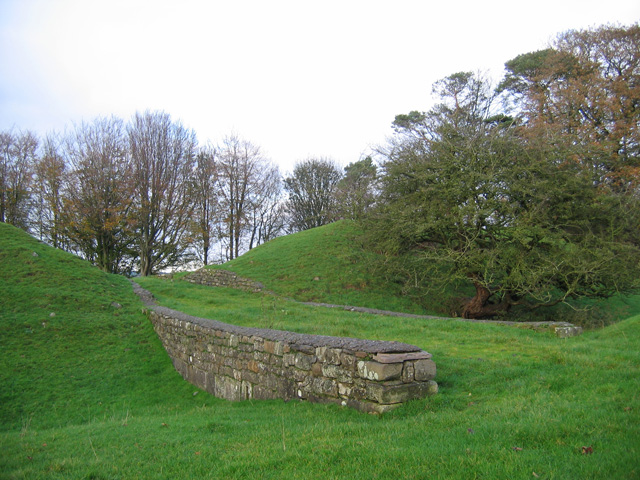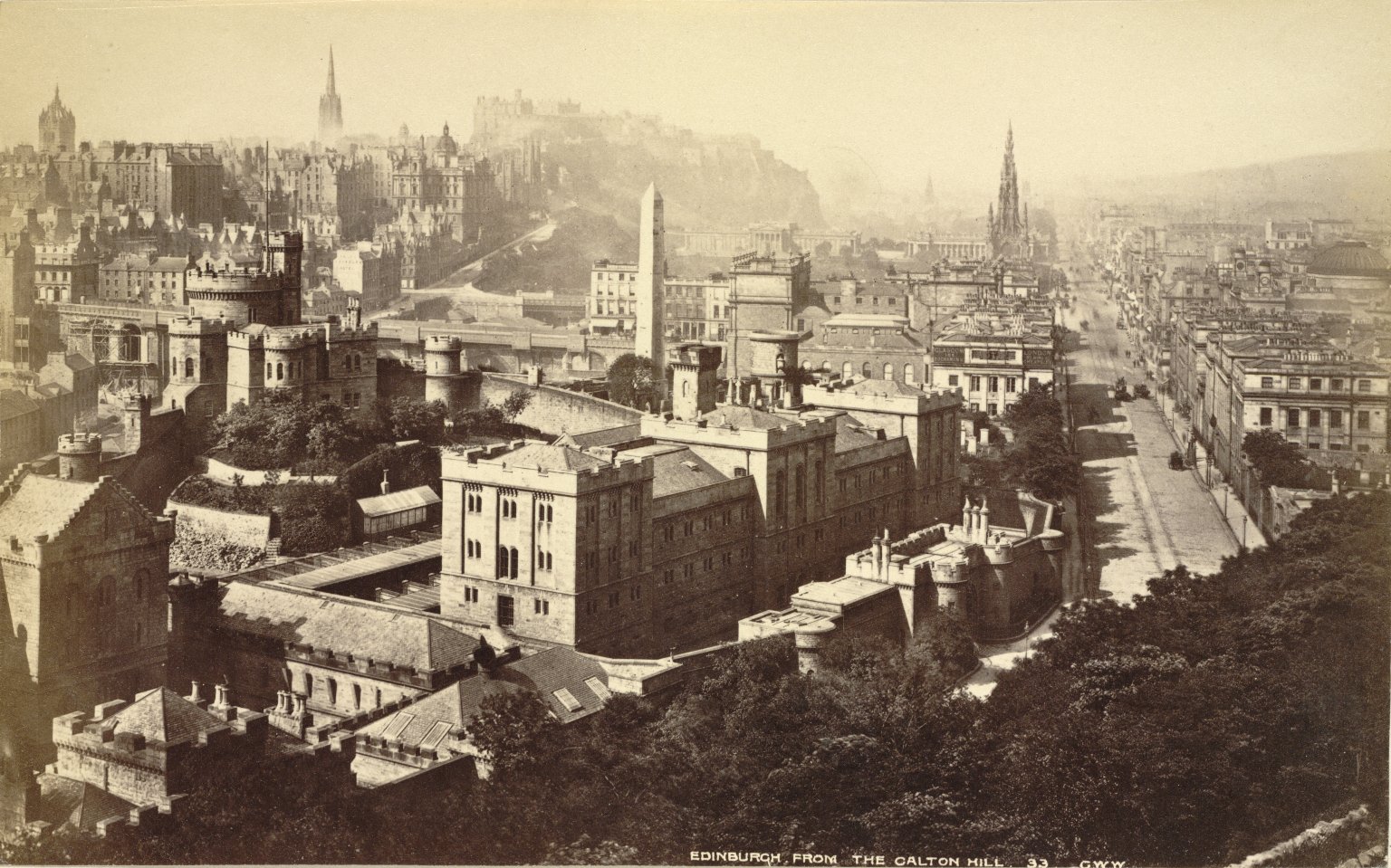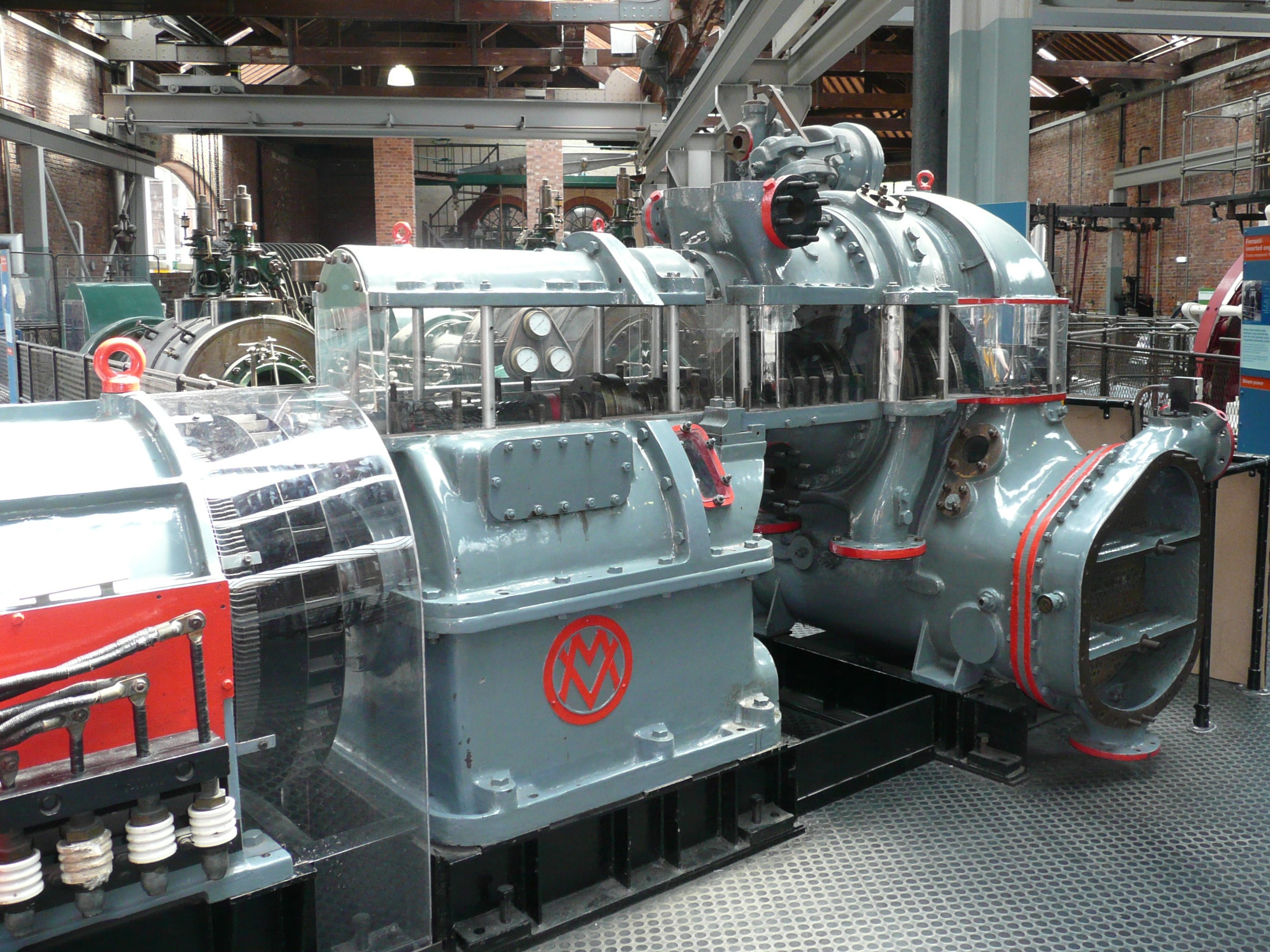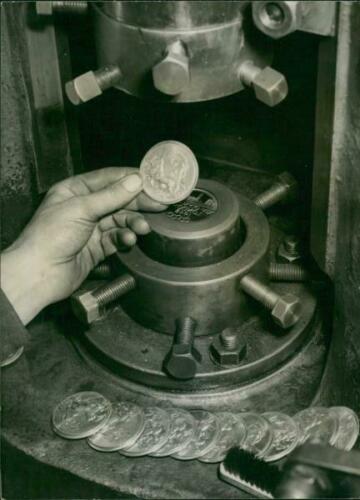|
Phyllis Bone
Phyllis Mary Bone RSA (15 February 1894 – 12 July 1972) was a 20th-century Scottish sculptor. She has the particular claim to fame as being the first female Academician of the Royal Scottish Academy. Although primarily the creator of small figurines, her works include several commissions at national level. Life Bone was born in Hornby, Lancashire, the daughter of Dr Douglas Mayhew Bone and his wife Mary Campbell Smith. As a child she had a great love for animals, her pet pony and retriever were the first models for drawing. She also enjoyed visiting Edinburgh's Zoological Park, studying, drawing and eventually sculpting animals. This fascination with the shapes and actions of animals influenced her pursuit in becoming an animal sculptor. Education and training Bone was educated at St George School for Girls in Edinburgh then trained as a sculptor at Edinburgh College of Art (1912–18) under Alexander Carrick, Pilkington Jackson and Percy Portsmouth. She received a ... [...More Info...] [...Related Items...] OR: [Wikipedia] [Google] [Baidu] |
Hornby, Lancashire
Hornby is a village and former civil parish from Lancaster, now in the parish of Hornby-with-Farleton, in the Lancaster district, in the county of Lancashire, England. The village is on the A683 and at the confluence of the River Wenning and Lune In 2011 the built up area had a population of 468. In 1881 the parish had a population of 358. History Hornby was recorded in the Domesday Book as ''Hornebi''. Hornby was a township and chapelry in Melling parish. From 1866 Hornby was a civil parish in its own right until it was merged with Farleton on 24 March 1887 to form "Hornby-with-Farleton". Amenities Hornby has a church called St Margaret's Church on Main Street, with its octagonal tower a county house called Hornby Castle which overlooks the village. It was started in the 13th century as a replacement for Castle Stede. The tower is 16th-century but the rest was constructed during the 18th and 19th centuries. Despite the castle now being divided into flats, it is still ... [...More Info...] [...Related Items...] OR: [Wikipedia] [Google] [Baidu] |
Newton Stewart
Newton Stewart ( Gd: ''Baile Ùr nan Stiùbhartach'') is a former burgh town in the historical county of Wigtownshire in Dumfries and Galloway, southwest Scotland. The town is on the River Cree with most of the town to the west of the river, and is sometimes referred to as the "Gateway to the Galloway Hills". The main local industries are agriculture, forestry and tourism. The town hosts a local market, and a number of services to support the farming industry. There are many mountain biking trails in the area. Newton Stewart lies on the southern edge of the Galloway Forest Park, which supplies many jobs to the town. Newton Stewart is from Scotland's book town Wigtown. History The town was founded in the mid 17th century by William Stewart, fourth and youngest son of the 2nd Earl of Galloway. The "New Town of Stewart" was granted burgh status by charter from King Charles II, allowing a weekly market and two annual fairs to be held. It was on a pilgrimage to the shrine of St N ... [...More Info...] [...Related Items...] OR: [Wikipedia] [Google] [Baidu] |
Kirkcudbright Tolbooth
Kirkcudbright Tolbooth is a historic municipal building in Kirkcudbright in Dumfries and Galloway, Scotland. Built between 1627 and 1629 to serve the town as a centre of commercial administration, a meeting place for the council, and a prison, it was used for all these roles until the late eighteenth century when the council moved much of its business to new, larger premises they had constructed across the street; the tolbooth remained in use as a prison until the early nineteenth century, after which it remained in council ownership and was put to a variety of uses. Amongst the people incarcerated in the tolbooth during its use as a prison were people accused of witchcraft, and as late as 1805 it was used to imprison a woman convicted of pretending to be a witch. It was also used to imprison Covenanters during the Killing Time of 1679–1688; in 1684 a crowd stormed the building, killing a guard and freeing the Covenanters held within. American naval hero John Paul Jones was h ... [...More Info...] [...Related Items...] OR: [Wikipedia] [Google] [Baidu] |
John Marshall (Scottish Sculptor)
John Marshall (1888–1952) was a Scottish sculptor active in the early 20th century. He is noted for doing much of his architectural work in-situ, on the face of the buildings. Life He was born in Edinburgh in 1888. He is thought to be descended from John Marshall, marble cutter on Leith Walk who had been a teacher to Thomas Campbell. He trained formally at Edinburgh College of Art. He worked in partnership with architects such as Sir Robert Lorimer and Sir John James Burnet and executed works designed by fellow sculptors such as Phyllis Bone, Benno Schotz, Pilkington Jackson, Alexander Carrick and Hew Lorimer. He exhibited in the Royal Scottish Academy 1935 to 1940. He is known to have sculpted the gravestone for William Marshall, his own son, in Drum Brae Cemetery in 1949. Notable works see *Carvings on the Scotsman newspaper offices, North Bridge, Edinburgh (1899–1902) now the Scotsman Hotel *Carvings at Lennoxlove House (1908–1912) *Carvings in the Thistle Chapel ... [...More Info...] [...Related Items...] OR: [Wikipedia] [Google] [Baidu] |
St Andrews House
St. Andrew's House (SAH), on the southern flank of Calton Hill in central Edinburgh, is the headquarters building of the Scottish Government. The building stands on the site of the former Calton Gaol. Today, the turreted Governor's House is all that remains of the former prison, next to the Old Calton Burial Ground and Political Martyrs' Monument. The large Category A listed Art Deco-influenced building looks out over Waverley Station, the Canongate and Holyrood Park. Construction The building was designed by Thomas S. Tait of Burnet, Tait and Lorne, architects, who won the architectural competition to gain the commission. Construction began in November 1935 and was completed in 1939; the building initially housed the Scottish Office, including the offices of the Secretary of State for Scotland. The heraldic sculpture on the front is by John Marshall. The requirement for the building arose as a result of a post First World War policy of limited transfer of devolved admini ... [...More Info...] [...Related Items...] OR: [Wikipedia] [Google] [Baidu] |
Galashiels
Galashiels (; sco, Gallae, gd, An Geal Àth) is a town in the Scottish Borders with a population of around 12,600. Its name is often colloquially shortened to "Gala". The town is a major commercial centre for the Borders region with extensive history in the textile industry. Galashiels is the location of Heriot-Watt University's School of Textiles and Design. Location Galashiels is south of Edinburgh and north of Carlisle on the A7 road. Gala lies on the border between the historic counties of Roxburghshire and Selkirkshire, on the Gala Water river. History To the west of the town there is an ancient earthwork known as the Picts' Work Ditch or Catrail. It extends many miles south and its height and width vary. There is no agreement about the purpose of the earthwork. There is another ancient site on the north-western edge of the town, at Torwoodlee, an Iron Age hill fort, with a later broch known as Torwoodlee Broch built in the western quarter of the hill fort, and o ... [...More Info...] [...Related Items...] OR: [Wikipedia] [Google] [Baidu] |
Glasgow
Glasgow ( ; sco, Glesca or ; gd, Glaschu ) is the most populous city in Scotland and the fourth-most populous city in the United Kingdom, as well as being the 27th largest city by population in Europe. In 2020, it had an estimated population of 635,640. Straddling the border between historic Lanarkshire and Renfrewshire, the city now forms the Glasgow City Council area, one of the 32 council areas of Scotland, and is governed by Glasgow City Council. It is situated on the River Clyde in the country's West Central Lowlands. Glasgow has the largest economy in Scotland and the third-highest GDP per capita of any city in the UK. Glasgow's major cultural institutions – the Burrell Collection, Kelvingrove Art Gallery and Museum, the Royal Conservatoire of Scotland, the Royal Scottish National Orchestra, Scottish Ballet and Scottish Opera – enjoy international reputations. The city was the European Capital of Culture in 1990 and is notable for its architecture, cult ... [...More Info...] [...Related Items...] OR: [Wikipedia] [Google] [Baidu] |
Metropolitan-Vickers
Metropolitan-Vickers, Metrovick, or Metrovicks, was a British heavy electrical engineering company of the early-to-mid 20th century formerly known as British Westinghouse. Highly diversified, it was particularly well known for its industrial electrical equipment such as generators, steam turbines, switchgear, transformers, electronics and railway traction equipment. Metrovick holds a place in history as the builders of the first commercial transistor computer, the Metrovick 950, and the first British axial-flow jet engine, the Metropolitan-Vickers F.2. Its factory in Trafford Park, Manchester, was for most of the 20th century one of the biggest and most important heavy engineering facilities in Britain and the world. History Metrovick started as a way to separate the existing British Westinghouse Electrical and Manufacturing Company factories from United States control, which had proven to be a hindrance to gaining government contracts during the First World War. In 1917 ... [...More Info...] [...Related Items...] OR: [Wikipedia] [Google] [Baidu] |
Sir Robert Lorimer
Sir Robert Stodart Lorimer, KBE (4 November 1864 – 13 September 1929) was a prolific Scottish architect and furniture designer noted for his sensitive restorations of historic houses and castles, for new work in Scots Baronial and Gothic Revival styles, and for promotion of the Arts and Crafts movement. Early life Lorimer was born in Edinburgh, the son of Hannah Stodart (1835–1916) and James Lorimer, who was Regius Professor of Public Law at University of Edinburgh from 1862 to 1890. In his youth the family lived at 21 Hill Street, a Georgian house in Edinburgh's South Side, close to where his father worked at Old College. From 1877 to 1882 he was educated at Edinburgh Academy, going on to study at University of Edinburgh from 1882 to 1885, however he left without completing his studies. He was part of a talented family, being the younger brother of painter John Henry Lorimer, and father to the sculptor Hew Lorimer. In 1878 the Lorimer family acquired the lease of ... [...More Info...] [...Related Items...] OR: [Wikipedia] [Google] [Baidu] |
Scottish National War Memorial
The Scottish National War Memorial is located in Edinburgh Castle and commemorates Scottish service personnel and civilians, and those serving with Scottish regiments, who died in the two world wars and subsequent conflicts. Its chief architect was Robert Lorimer, commissioned in 1919, and the monument was formally opened in 1927. It is housed in a redeveloped barrack block in Crown Square, at the heart of the castle, and incorporates numerous monuments. The Rolls of Honour kept in the memorial include the names of those Scots servicemen and women and Scots civilians that died in all wars after 1914. This includes all Scots who were killed as a result of enemy action or who died as a result of wounds, diseases, or injuries while serving in the British Armed Forces, the Merchant Navy, the armed forces of the Dominions, the women's services, and the nursing services, together with all members of Scottish regiments. The Rolls of Honour include those who died between 4 August 1914 ... [...More Info...] [...Related Items...] OR: [Wikipedia] [Google] [Baidu] |
Robert Sivell
Robert Sivell (1888–1958) was a Scottish portrait artist active in the first half of the 20th century. He was a founder member of the Glasgow Society of Artists and Sculptors in 1919. Biography Sivell was born in Paisley, Renfrewshire, but lived in Kirkcudbright, Galloway for long periods of his adult life. While beginning evening studies at the Glasgow School of Art with Fra Newbery in 1908, Sivell was still working as an apprentice engineer and he had to abandon the art course in 1910. He lacked the means to attend school full time. In 1912 he travelled to Canada and also visited Paris and Florence, but he returned to Scotland in 1914 as the country readied for war, using his engineering skills to fit out trawlers and drifters for mine-sweeping and other operations. He also worked on the Boom Defence of Cromarty. In 1916 he joined the Merchant Navy. When he left it, Sivell moved to Glasgow, where he could paint evenings and weekends, sharing a studio with Archibald McGla ... [...More Info...] [...Related Items...] OR: [Wikipedia] [Google] [Baidu] |
1948 Summer Olympics
The 1948 Summer Olympics (officially the Games of the XIV Olympiad and also known as London 1948) were an international multi-sport event held from 29 July to 14 August 1948 in London, England, United Kingdom. Following a twelve-year hiatus caused by the outbreak of World War II, these were the first Summer Olympics held since the 1936 Summer Olympics, 1936 Games in Berlin. The 1940 Summer Olympics, 1940 Olympic Games had been scheduled for Tokyo and then for Helsinki, while the 1944 Summer Olympics, 1944 Olympic Games had been provisionally planned for London. This was the second time London had hosted the Olympic Games, having previously hosted them in 1908 Summer Olympics, 1908, forty years earlier. The Olympics would again return to London 64 years later in 2012 Summer Olympics, 2012, making London the first city to have hosted the games three times, and the only such city until Paris and Los Angeles host their third games in 2024 Summer Olympics, 2024 and 2028 Summer Olympi ... [...More Info...] [...Related Items...] OR: [Wikipedia] [Google] [Baidu] |







.jpg)
